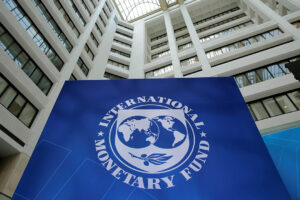




Philippines Trade Update: Exports momentum continues
 DOWNLOAD
DOWNLOAD

Quarterly Economic Growth Release: More BSP cuts to come
 DOWNLOAD
DOWNLOAD

Monthly Economic Update: Fed catches up
 DOWNLOAD
DOWNLOAD


IMF warns Asia central banks on being ‘overly dependent’ on Fed

Central banks in the Asia and the Pacific region should focus on controlling inflation and avoid setting policy based on the US Federal Reserve’s decisions, the International Monetary Fund (IMF) said.
“We recommend Asian central banks to focus on domestic inflation and avoid making their policy decisions overly dependent on anticipated moves by the Federal Reserve,” Krishna Srinivasan, director of the IMF’s Asia and Pacific Department, said in a speech on Thursday.
“If central banks follow the Fed too closely, they could undermine price stability in their own countries,” he added.
Analysts widely anticipate the Bangko Sentral ng Pilipinas (BSP) to begin its policy easing cycle after the Fed starts cutting rates to help support the peso.
The BSP’s policy-setting Monetary Board this month left its target reverse repurchase rate unchanged at a near 17-year high of 6.5% for a fourth straight meeting.
The Philippine central bank raised borrowing costs by 450 basis points (bps) from May 2022 to October 2023 to help bring down elevated inflation.
Meanwhile, the Fed last month kept its target rate at the 5.25%-5.5% range for a fifth straight meeting following cumulative hikes worth 525 bps from March 2022 to July 2023.
Markets now expect the Fed to begin its easing cycle as late as September from previous bets of a cut by June amid data showing sticky inflation and strengthening activity in the world’s largest economy.
Top US central bank officials including Fed Chair Jerome H. Powell backed away on Tuesday from providing any guidance on when interest rates may be cut, saying instead that monetary policy needs to be restrictive for longer and further dashing investors’ hopes for meaningful reductions in borrowing costs this year, Reuters reported.
Fed policy makers have said since the start of the year that rate cuts are contingent on gaining “greater confidence” that inflation is moving towards the central bank’s 2% goal, but readings over the past few months show price pressures may even be moving in the opposite direction.
“The recent data have clearly not given us greater confidence and instead indicate that it’s likely to take longer than expected to achieve that confidence,” Mr. Powell told a forum in Washington, in what is likely to be his last public appearance before the April 30-May 1 policy meeting.
“Right now, given the strength of the labor market and progress on inflation so far, it’s appropriate to allow restrictive policy further time to work and let the data and the evolving outlook guide us,” he said.
Meanwhile, for his part, BSP Governor Eli M. Remolona, Jr. has said that while the central bank closely watches the Fed’s signals on its next move, its own monetary policy decisions will not be dependent on it.
The BSP chief has signaled that rate cuts may be delayed to the fourth quarter or even as late as the first quarter of 2025 if upside risks to inflation persist.
IMF’s analysis showed that US interest rates have a “strong and immediate impact on Asian financial conditions and exchange rates.”
“Expectations about Fed easing have fluctuated in recent months, driven by factors that are unrelated to Asian price stability needs,” it added.
Mr. Srinivasan said that inflation will likely settle within target across the region. However, this may require keeping rates higher for longer.
“Going forward, we expect that inflation will converge to central bank targets. But this requires a differentiated policy approach: a tighter-for-longer stance in economies where inflation is elevated, and accommodative macro-policies in economies with sizable slack,” she said.
Philippine headline inflation picked up to 3.7% in March from 3.4% in February. This was slower than the 7.6% clip in the same month last year and marked the fourth straight month that the consumer price index was within the central bank’s 2-4% target.
For the first quarter, inflation averaged 3.3%, below the BSP’s baseline forecast of 3.8% and risk-adjusted forecast of 4%.
The BSP has warned that inflation could temporarily accelerate above its target over the next two quarters.
Meanwhile, Mr. Srinivasan also noted the need for governments within the region to ramp up their fiscal consolidation efforts.
“For fiscal policy, we recommend that governments focus on consolidation, to curb the rise in public debt and rebuild fiscal buffers,” he said.
“Our forecasts show that on current fiscal plans, debt ratios would stabilize for most economies, provided governments underpin these plans with concrete policies and follow through on them,” he added.
The government is targeting to bring down its deficit-to-gross domestic product (GDP) ratio to 3.7% by 2028 and its debt-to-GDP ratio to below 60% by next year. — Luisa Maria Jacinta C. Jocson with Reuters
This article originally appeared on bworldonline.com





 By BusinessWorld
By BusinessWorld